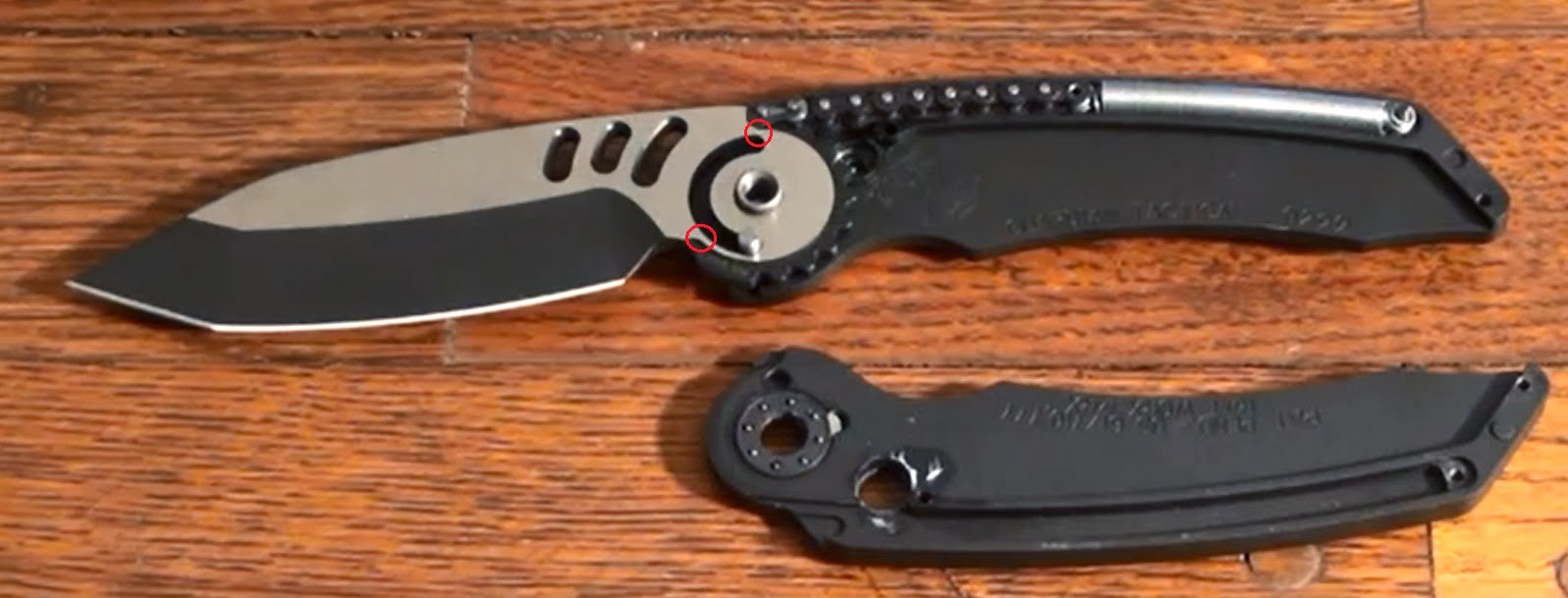If a knife fails from simply opening and closing, there is a problem. Spring-failure is the usual cause of this as that is the ONLY place where the tool is being stressed. This design uses very long springs to try and reduce the wear, makes sense ... IF that is the only thing you use the tool for, opening and closing.
But a knife's primary purpose is cutting. This knife is quite thick, reducing cutting performance substantially, but that thickness is obviously there for a reason, namely
strength and
toughness - both vertical AND lateral. The length and thickness of the blade demand increased force from the user, and all of that force will end up concentrated at the juncture between blade and handle, where the support metal is reduced to two meager prongs of hardened steel, each ~1/8" x 1/8". On top of this is the lack of material strength supporting the lock-button/stop-pin, etc. since the scales appear to be linerless aluminum, prone to plastic deformation with hard or extended use.
A tool is only as strong as its weakest link.
If this is simply a
Yo-Yo, meant to be opened and closed but nothing more, then indeed it will last quite long because of the springs.:thumbup:
But if it is meant to be used
as a knife, it appears to have all the strength of an Opinel without the impressive cutting geometry. Repeated impacts (e.g. batoning, chopping, a spine-whack) may soon result in deformation of the aluminum around the lock-button if not failure of those little steel arms and loss of the blade
 Lateral
Lateral stress (i.e. prying) will bend a thinner blade, maybe result in a broken tip, but that won't happen here because the blade is so thick... instead, the blade is likely to snap right out of the handle at those little arms.
The design is like a badly made rat-tail tang on a fixed blade - insufficient support for all but the most meager tasks for which a thinner, lighter knife which be much more appropriate. So what is the point of this design? Either it is a mistake or the knife is simply intended as an expensive display/conversation piece or a Yo-Yo. In either case, it is hardly
"designed to be the world's strongest auto knife."
And again, I intend no offense to anyone in this, and I would LOVE a video demonstration of just how much stress this knife can handle, but from the images alone I'd have more confidence in the strength of a Buck 110 (to use a random example).
If the tang-track milled for the internal stop-pin where eliminated from the design, and steel support placed around the pivot and lock-button, THEN the design might compete for strength with other knives of similar size. It's great that their springs take so long to wear out.





